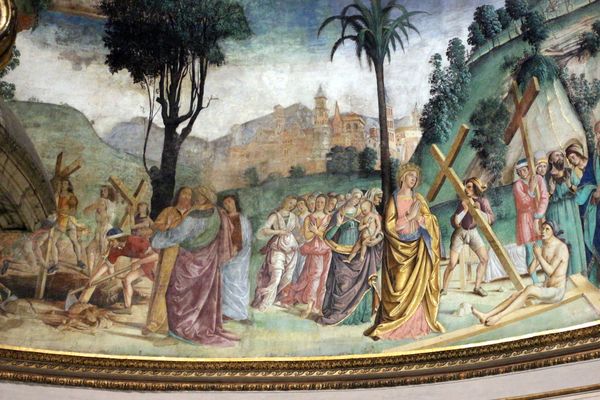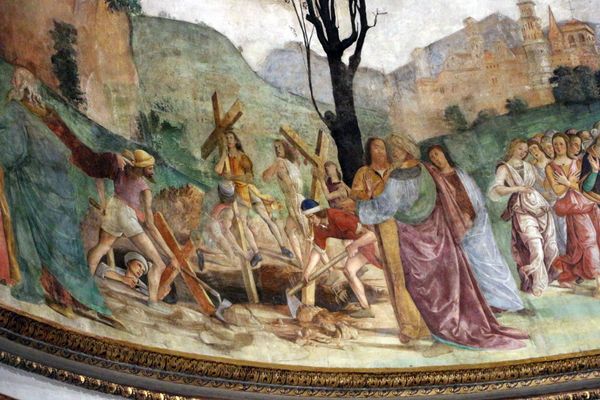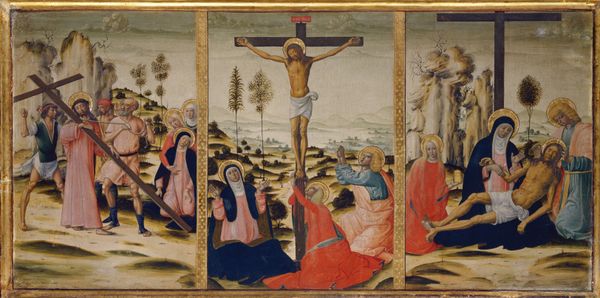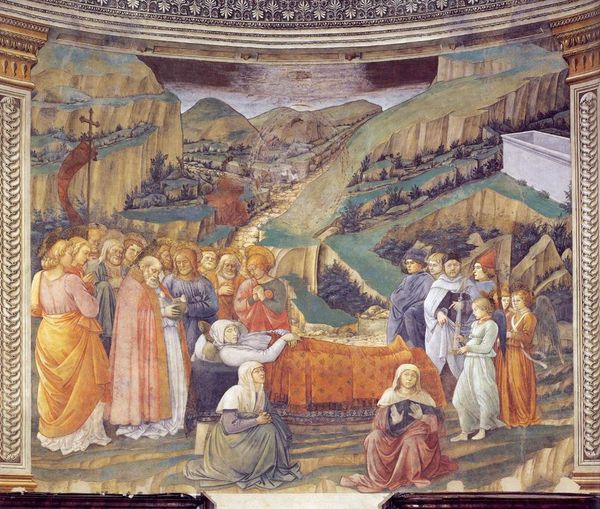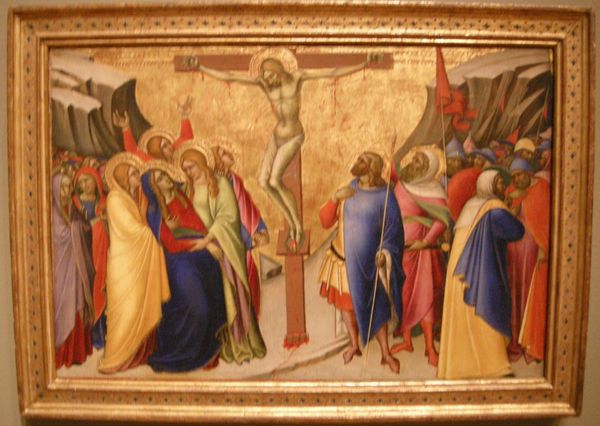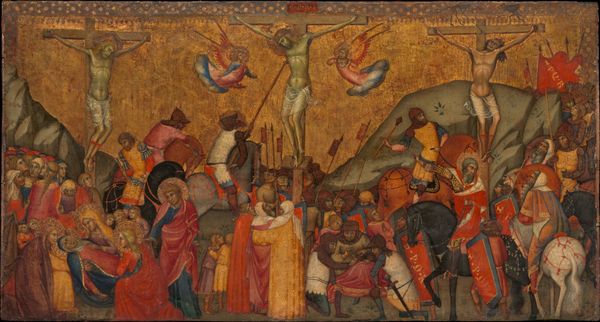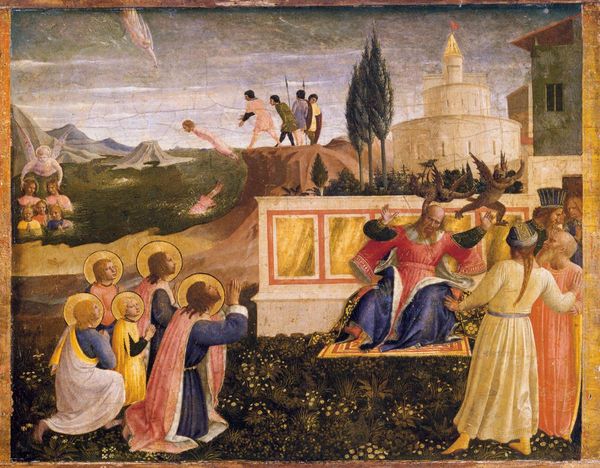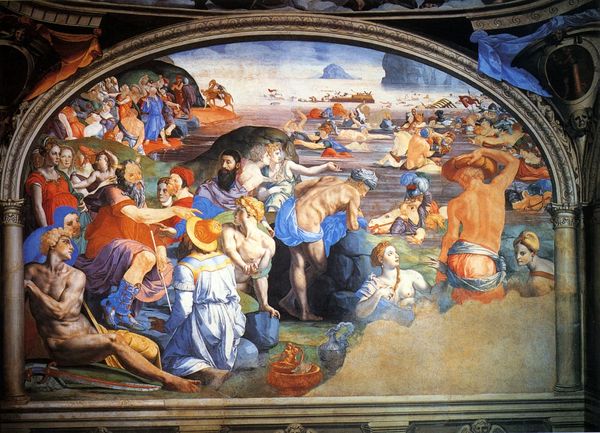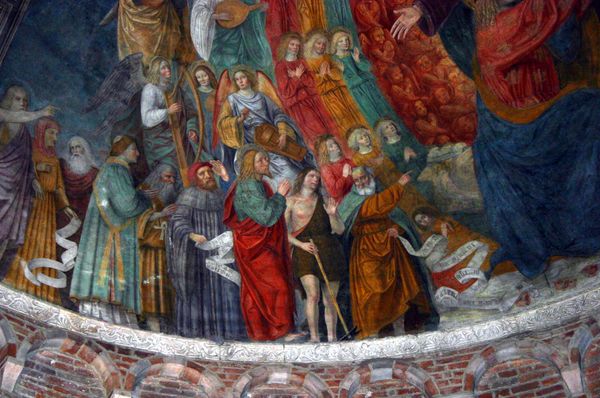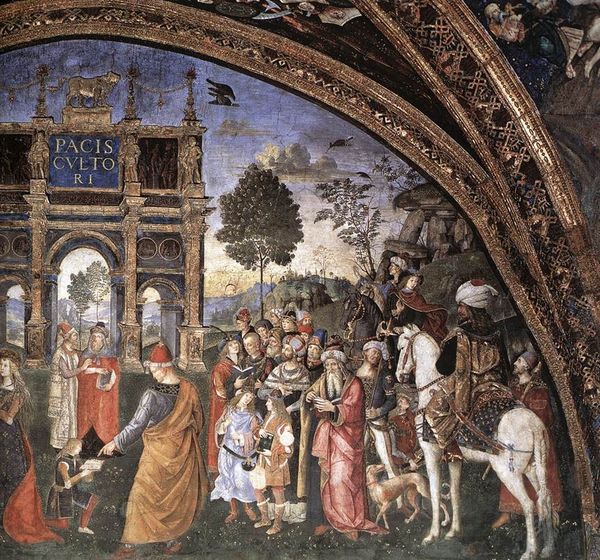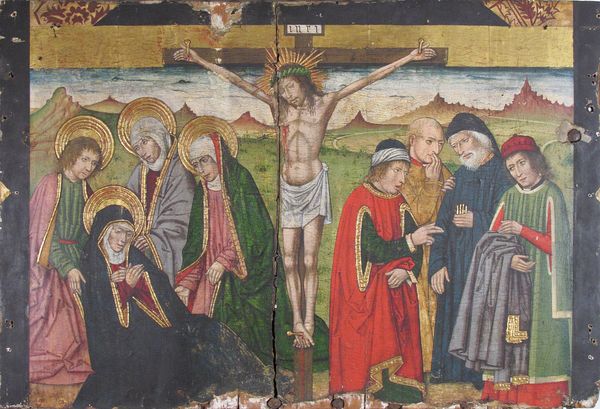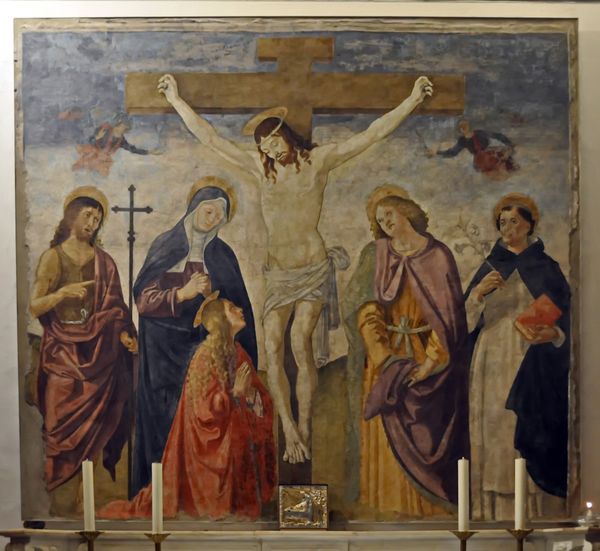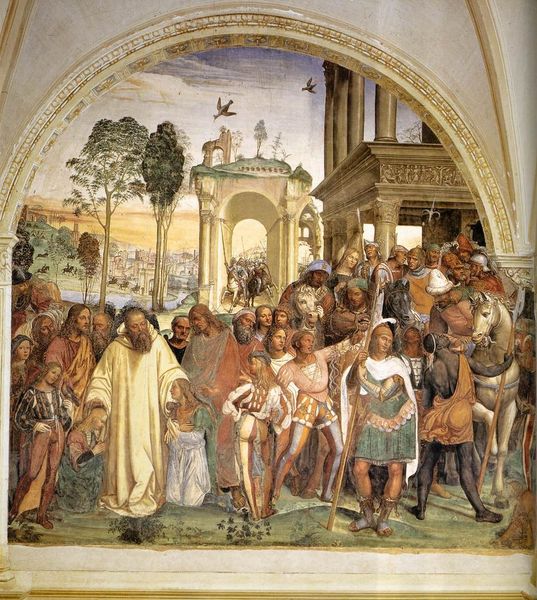
painting, fresco
#
narrative-art
#
painting
#
figuration
#
fresco
#
history-painting
#
academic-art
#
italian-renaissance
Copyright: Public domain
Curator: This fresco cycle, "Stories of the Holy Cross", was completed in 1492 by Antoniazzo Romano, and depicts, well, stories related to the Holy Cross. What strikes you immediately about it? Editor: I'm drawn to the composition – it’s a stage filled with figures frozen in various attitudes of reverence and military pageantry. The monumental cross anchors the scene, a potent symbol amidst the human drama. But, there's a disconnect between the serene landscape and the religious undertones and implications of colonial violence, I'd argue. Curator: I can see what you mean. Looking closer at this Italian Renaissance piece, what’s interesting to note is how the figures and the landscape behind them are intentionally placed within the narrative framework, which was often a custom during this time. The frescoes emphasize the political and religious context in 15th-century Rome, reflecting a time when the church's power was at its zenith. It was heavily involved in shaping society’s imagery of power and piety. Editor: It’s impossible to ignore the work’s function, especially considering the clear depiction of military and religious figures standing shoulder to shoulder as representatives of institutions wielding power in that moment. One wonders, too, how race, class, and gender intersect within this carefully constructed scene. Who is seen, who is heard, and whose stories are deemed worthy of immortalization in fresco? Curator: Indeed. We should also consider the artistic lineage at play. Antoniazzo was influenced by earlier masters like Fra Angelico and, notably, the shift toward more realistic portrayals during the early Renaissance that focused on perspective. It’s apparent he strived to connect this local narrative of the Holy Cross, which may have further legitimized existing power structures during this time, with universally understood forms and symbols. Editor: So, ultimately, the fresco becomes a cultural artifact. It’s charged with not just artistic, but social and political intention, inviting us to question how these stories continue to resonate – or clash – with our current understanding of history, faith, and the representation of power. Curator: Precisely. Seeing the world that shaped the "Stories of the Holy Cross", as revealed through art, can invite discussions about values, power, and how these complex issues interact across the centuries.
Comments
No comments
Be the first to comment and join the conversation on the ultimate creative platform.
